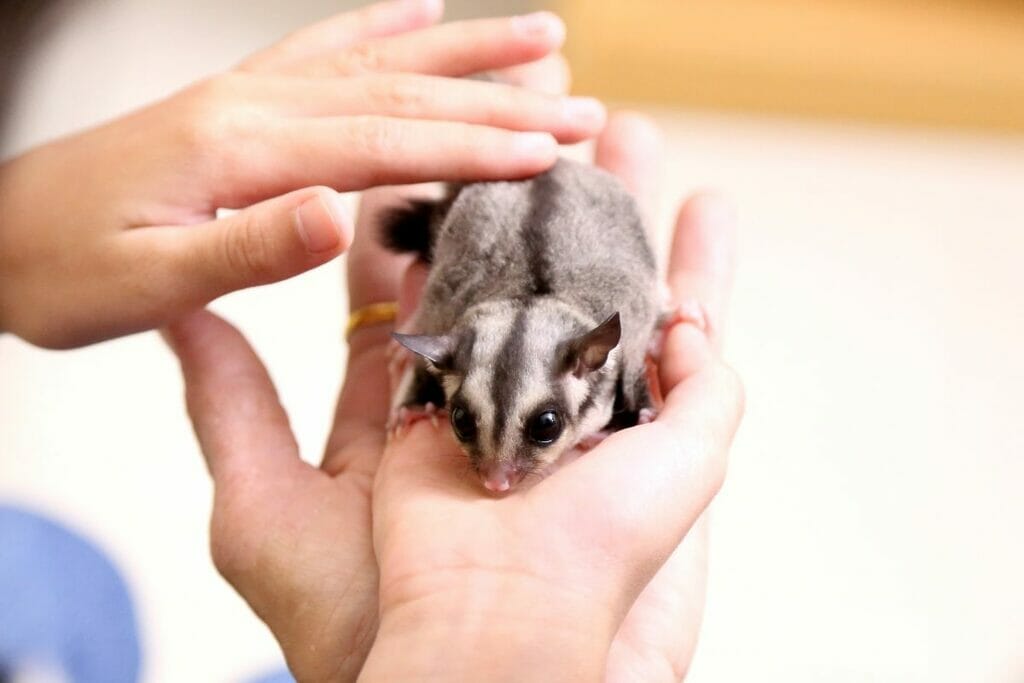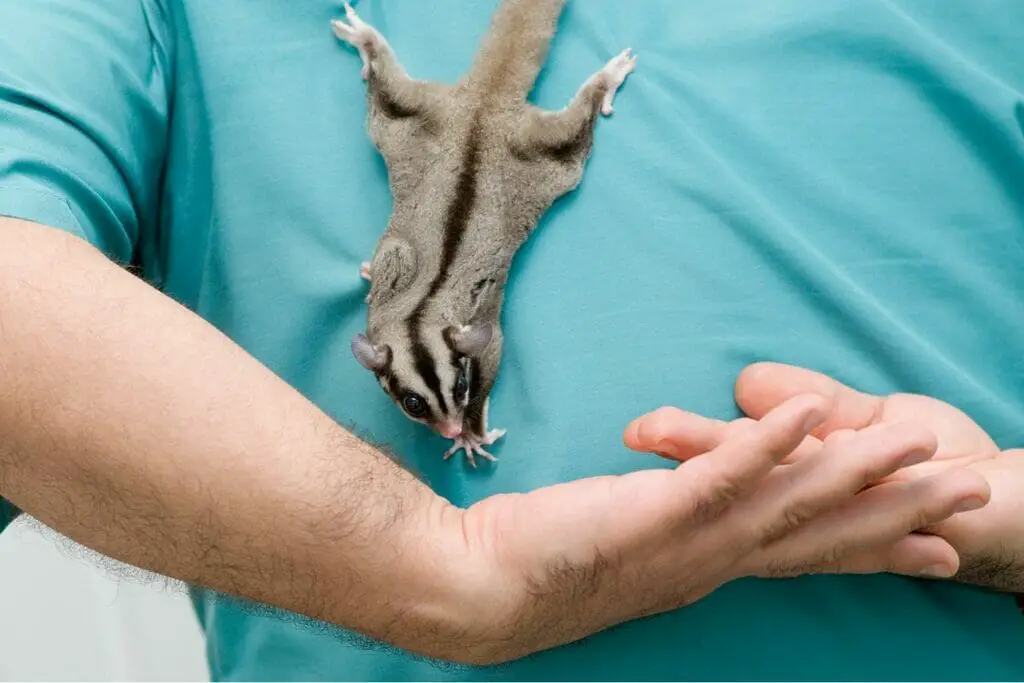Sugar gliders are beautiful, adorable creatures that can make for loving and playful pets, so long as you are sure that you are able to tend to their specialized care needs and give them a safe and suitable environment to live in.

If you are new to owning sugar gliders, you are sure to have questions about them and their care, as well as their nature as pets.
In this article, we are going to be looking at sugar gliders and their recognition of their human companions, as well as how bonds can be formed. Let’s get started.
Do Sugar Gliders Recognize Humans?
In terms of intelligence, sugar gliders have been known to have intelligence as high as some dog breeds. This means that they can be trained and do have recognition of various elements of their owners, such as their face and their voice.
This will only come once your pet is comfortable with you, though, so you need to be patient and build a bond with them to increase the chances of them recognizing you or even coming to you when called.
Bonding With Your Sugar Glider
The key to getting your sugar glider to recognize you is to bond with them, which takes time, effort, and patience.
Bonding is a nurturing need that sugar gliders desire that begins as soon as they are born, as they will nest within their mother’s pouch when they are first born and remain there for weeks.
The need for bonding continues well into adulthood, and this will transfer over to you as their main caretaker when you find yourself with a pet sugar glider.
As mentioned, the bonding process will take time and effort on your part, but it is also important to remember that every animal is different. Some may respond well to certain techniques whereas others may not.
It is all about learning about the individual needs of your pet, which should start coming naturally to you once you begin trying to bond with them.
Five Stages Of Bonding With A Sugar Glider

There are five steps that you need to be aware of when it comes to bonding with a sugar glider, so let’s take a closer look at each one.
1. Adaptation
This phase relates to when you first bring your sugar glider home. Everything will be new to them, and they will need to adapt to their new environment.
It is only natural for your pet to be nervous or even scared during this time, so during this phase it is important to give them their space.
Don’t touch them or grab them to try and pick them up and give them some time in their enclosure so that they can get used to their new home and all the new sounds, smells, and environments.
You can tell if your sugar glider is upset during this time as they will make loud, irritated noises, which is known as crabbing.
2. Getting Used To You
Once your sugar glider starts to get used to their new home, you can begin trying to get a little closer to them so that they get used to your smell and presence as well.
Smells are an important part of the bonding process for a sugar glider to feel comforted and connected to their owner, so you can always put a piece of clothing you have recently worn into their enclosure so that they get used it.
You can also put a towel or fleece on the area where they sleep.
Begin talking to your sugar glider in a soft voice, but don’t try to get too up close and personal yet. You will know if your sugar glider isn’t happy about your presence yet, as they will likely continue with their crabbing.
3. Rewarding
One of the best ways to start getting your sugar glider to accept your presence is to offer them some treats.
There are sugar glider specific treats that you can get, but treats such as honey or yogurt can also work (just make sure not to feed them too much!).
Place the treat inside the cage or on your hand. It might be a little early for them to come right up to your hand to take the treat, but are at least getting used to your presence and beginning to associate it with treats.
Don’t forget to be gentle and calm if they do approach you to start building trust and that all-important bond.
It is normal for a sugar glider to still be somewhat wary at this point, so don’t be disheartened if they begin to crab at you again. Make sure to give them as much space as they need.
As the sugar glider becomes more sociable, reward the behavior with a treat. Whilst sugar gliders don’t exactly have a massive bite, they will still do so if they are anxious, so if you do get bitten, do not punish them in any way.
The bonding process will be delayed or stopped entirely as there is no way for them to understand punishment. Patience is key, so stay calm, and you are sure to reap the benefits soon.
4. Spending Time Together
You will find that your sugar glider begins to warm up to you if you persevere and put in the effort. This is the point where you will want to start spending time with your little companion.
Take them out of their cage- as long as you are sure that they are comfortable- and start getting them used to physically interacting with you.
Be gentle and do not squeeze or grab at them. Let them move at their own pace, and let them come to you.
Maintain a routine when it comes to letting them out of their cage- as well as feeding time- so that they become to feel more adjusted and comfortable.
5. Bonding Pouches
Bonding pouches are especially made to aid with bonding, as they are intended to replicate the pouch of a sugar glider mother.
They are used so that you can carry your sugar glider around and get them used to you and their new environment whilst they are in a comfortable place.
Whilst they are in the pouch, make sure to talk to them to get them used to you. You will know if they are feeling happy and secure if they begin making popping-like chirping sounds.
Those are the five steps that you need to take in order to begin the bonding process with your sugar glider!
Final Thoughts
To answer the initial question of whether sugar gliders can recognize their owners, the answer is yes they can. However, it will take a lot of effort and work on your part for them to do so.
As long as you follow these steps, remain calm and patient, and put in the effort, you should be able to bond with your sugar glider in no time so that they will soon be able to recognize you as their owner, their caregiver, and their protector.








